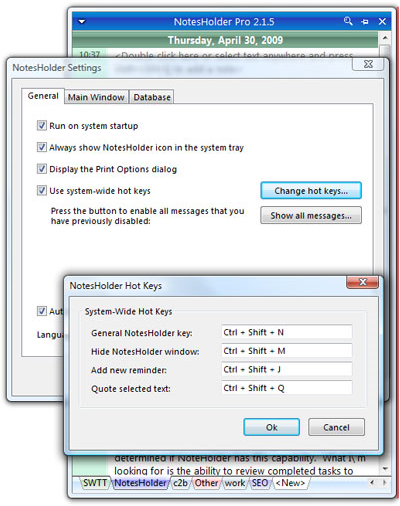

Re-position page numbers (locations, font, etc.) On-screen adjustment of all margins, vertical & horizontal positioning of systems, vertical position of staves, vertical position of lyrics (relative to staff) & horizontal position of the staff labels "On-screen adjustment of all beat positions in all systems
Noteabilitypro pdf#
These PDF files can be viewed or printed using Adobe Acrobat Reader. The examples demonstrate NoteAbilitys abilities to create conventional scores, graphical scores, scores of early music, music theory examples, and scores using a variety of different music fonts. On your constatation about spacing this is small part of specifications in NAP : The following PDF files were generated directly by NoteAbilityPro. In version 3, NAP have 80 staves per system and more if you wish. What we need are new methods and new ideas, not more apps.
Noteabilitypro plus#
Plus Notion and StaffPad and all the others with particular focuses. The notation market is over-saturated with apps: Dorico, Sibelius, MuseScore, Finale. That is a kick in the pants if it's your life's work, I'll admit. If it hasn't taken market share from Finale and Sibelius in the last quarter-century, then it's not going to take on Dorico and MuseScore now. Then there's marketing: I've never heard of this app before now, and it's been in business since the 90s. The same applies to Encore/Overture.Ī music notation app needs to have a team of developers pushing out features and support staff helping users with bugs and requests, with 'hand-over' continuity.
Noteabilitypro pro#
Realistically, NoteAbility Pro could be the best music app in the world, but if I'm entirely dependent upon one man (approaching retirement) to keep that software alive - to say nothing of new features - then that's a risky proposition. But that doesn't bode well for its future. As such, it is an extraordinary and impressive achievement.
Noteabilitypro free#
NoteAbility Pro is now a free download, having been a commercial product since 1996. This review suggests that the user interface leaves room for improvement (if I dare bring up that subject!) (where ratio is the tuplet ratio in a common 4/4 or 8/8 measure.The hairpins, beams and slurs in the examples are quite poor, IMO. Ratio_numerator * Tempo / Ratio_denominator = Tempo_of_irrational_notes (BPM) The simple equation for determining the speed of notes is:ĭenominator/ Tempo (BPM) = Basic_unit * Irrational_subdivision = Tempo_of_irrational_notes (BPM) the # of notes is the numerator, and the ratio is determined by the denominator).

The most important aspect of this is the ratio between time signatures, then playing the correct number of notes at that tempo (i.e. The ratio is 3:2, with each eighth-note played at 180 BPM (or in eighths at a tempo of 90 BPM). A time signature of 2/12 means there are 12 divisions in the 4/4 bar, each one being the same as an eighth-note triplet. The ratio is 5:4, meaning the performance speed of each eighth-note quintuplet is 75 BPM (60/8=7.5*10=75).

With a basic measurement of four beats one whole note, the subdivision into ten units means there are ten eighth-note quintuplets in a 4/4 measure. Similarly, in 8/8, 60/8=7.5 (7.5 being the basic unit)Ī time signature of 1/10 would mean that there are ten units per bar. Viewed differently, a whole note in 4/4 equals 15, because there are four quarter-notes in a 4/4 bar, and 60/4=15. with each of the 6th notes played at a speed of 90 BPM. The relation between the two time signatures is 6:4, or 3:2 twice over.īy extension, a bar of 4/6 would mean four quarter-note triplets (three in the time of two, plus one more tuplet note at the same speed).ĥ/6 would mean five quarter-note triplets (three in the time of two, plus two more at the same speed), etc. In a measure of 6/6, each quarter-note is played at a tempo of 90, with the ratio between the two tempi being 3:2. The six sixth-notes (triplets) are played in the same space of time it takes to play four quarter-notes.Īt a tempo of 60 BPM, in 4/4 each quarter-note is played at a tempo of 60. The value of the whole note remains constant (4/4 = 6/6). 4/6), it means that the whole note is divided into six parts. If the denominator of the time signature is a 6 (i.e. Western music conventionally uses time signatures in multiples of two in relation to a whole note (2/4, 8/8, 3/16). In a 3/4 measure, the quarter-note still gets the pulse, but there are three in the measure. In a 4/4 measure, the quarter-note (the denominator) gets the pulse, and there are four of them in the measure.


 0 kommentar(er)
0 kommentar(er)
